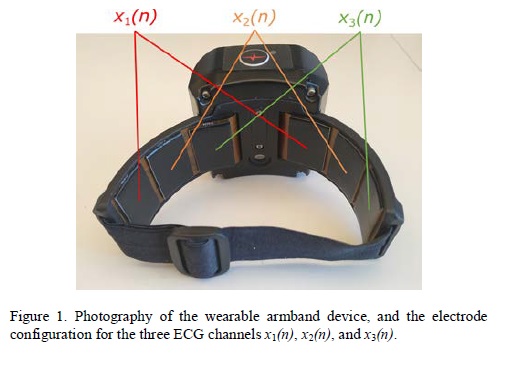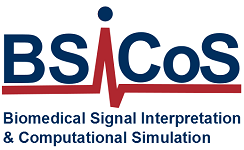18 May, 2021
Electrocardiogram (ECG) monitoring is traditionally used to screen patients who suffer from or are likely to develop cardiovascular disease. WECARMON has come up with a comfortable armband for non-invasively monitoring cardiac and respiratory parameters long-term.
Patients suffering from chronic inflammatory lung conditions such as chronic obstructive pulmonary disease (COPD) have a higher risk of developing heart problems due to obstructed airflow from the lungs. In addition, the condition obstructive sleep apnoea syndrome (OSAS), which is associated with abnormal breathing during the night, may also lead to cardiovascular disease. Both these conditions are treatable provided they are diagnosed promptly. Screening for OSAS involves an overnight sleep study known as polysomnography which records various physiological parameters including brain waves, blood oxygen levels, heart rate and breathing. However, it cannot be performed for prolonged periods of time and is uncomfortable for the patient.
A wearable armband for long-term ECG monitoring
Undertaken with the support of the Marie Skłodowska-Curie Actions programme, the WECARMON project developed a novel monitoring system that provides cardiorespiratory and autonomic nervous system information. “The system is based on a wearable armband that performs ECG and can also provide some cardiorespiratory vital signs through specific algorithms,” explains project coordinator Pablo Laguna. Monitoring of these vital signs can help clinicians recognise characteristic patterns of chronic respiratory disease exacerbations and detect COPD promptly. The WECARMON device has been tested in healthy volunteers in everyday life, recording ECG signals of sufficient quality to obtain a heart rate nearly 84 % of the time. This is significantly higher than commercially available devices, that are usually based on optical technology and they do not surpass 55 %. Researchers envisage higher efficiency in chronic respiratory patients as they have a less active lifestyle and movement-based errors will be lower. Estimation of respiratory rate from the WECARMON armband-acquired ECG signals is also reliable and accurate, and correlates to the amount of air displaced in a respiratory cycle referred to as tidal volume.
Advantages of the WECARMON armband
Conventional ECG monitors can be cumbersome with obtrusive leads or require hydrogel-based electrodes that often cause skin irritation. Similar adhesives are used in patch devices and Holter monitors for short-term monitoring of patients. In contrast, the WECARMON wearable armband is based on dry electrodes without adhesives, preventing skin irritation. Importantly, it is comfortable to wear, provides cardiorespiratory information, and can be used for the daily monitoring of patients.
This is particularly convenient in cases where conventional respiration monitors cannot be employed such as in chronic respiratory diseases, sleep studies, and epilepsy. “One of the key objectives of WECARMON is to facilitate early detection of COPD/asthma exacerbations and lead to a better prognosis of the patient with concomitant reduction in healthcare cost,” emphasises research fellow Jesús Lázaro. Moreover, the capacity of the wearable armband for long term monitoring can be exploited for assessing the effectiveness of treatment and adapting it accordingly, offering a personalised treatment approach. Researchers also plan to implement the WECARMON device for stress and arrhythmia monitoring as well as develop a smartphone application for recording patient physiology information in the cloud.
For further information about the project: CORDIS EU results research

